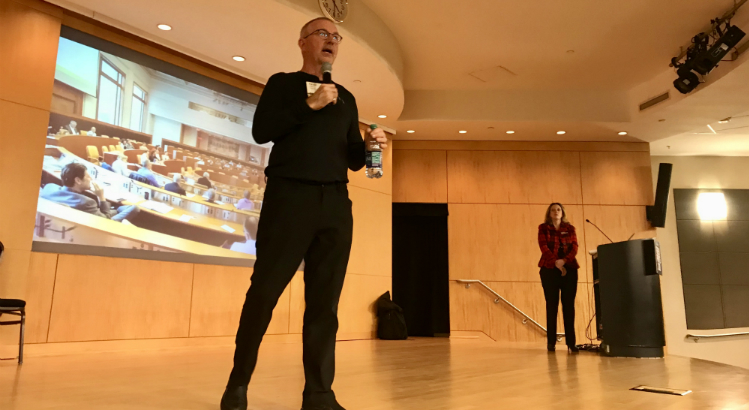I only caught a couple of sessions at last week’s Greenprints Conference on sustainable design and construction in the Southeast. But they were good ones.
The main theme: Net zero energy is perfectly feasible but — if we’re to meaningfully combat climate change — the built-environment community needs to adopt net zero more quickly.
A panel discussion on the “Evolution of Market Transformation” was right up Cliff Majersik’s alley. He is, after all, executive director of the DC-based Institute of Market Transformation. Majersik noted that data transparency, education of real estate owners, and continual code improvements are all crucial to moving the sustainability needle, especially on energy. The problem: “Real estate is a really fragmented industry and the general attitude is if it’s not broke don’t fix. … We’ve got positive movement now, but it’s not nearly fast enough.”
In a keynote, Integral Group CEO Kevin Hydes offered up a very similar message. Like many other top-level engineers and architects, Roche says: “This stuff doesn’t have to cost more.” But, he added. ”we’ve got to find a way to mover quicker.”
Then, Hydes made a point that might challenge regenerative building orthodoxy. He argued that the only way to scale up meaningfully to net zero energy is by “decarbonizing the grid” through utility-scale renewable energy. That vision of off-site renewable energy is somewhat at odds with the more idealistic view that buildings should rely on their own distributed clean energy, usually in the form of rooftop solar arrays. But few would argue with Hyde’s point that a large portion of the world’s building stock (think: skyscrapers and power-hungry data centers) simply can’t generate enough of their own clean energy — at least not on budget with current technology.
In a brief conversation afterward, Hydes clarified his point. “Decarbonizing” utility level energy amounts to one tool in an all-of-the-above approach to combatting greenhouse emissions from buildings. Energy efficiency and onsite solar are just as vital as is off-site generation, because utility-scale renewable isn’t going to ramp up production enough all by its lonesome.
(Side note #1: Just like Living Building Challenge founder Jason McClellan, Hydes calls legendary Kansas City architect Bob Berkebile his mentor. Hyde’s 10-year-old firm, which opened an Atlanta office a few years ago, is based in San Francisco.)
There were, of course, other things to be learned at Greenprints (please feel free to add something I missed in the comments section below). My Kendeda Fund colleague, Dennis Creech, came away excited by the progress being made on clean energy for affordable housing.
(Side note #2: As many readers are aware, Creech’s history with Greenprints goes way back. The event — now in its 20th year — is put on by Southface, which Creech founded. Until late 2016, he was the organization’s executive director. In 2017, he became a fund advisor at Kendeda, focusing on the Kendeda Building for Innovative Sustainable Design and other sustainability in the Southeast.)
When it comes to net zero energy, one advantage for mid-rise apartments is that they hit the sweet spot because, in many cases, today’s solar panels can produce just the right amount of energy when spread across the rooftops of efficiently designed, three or four story residential buildings. Another advantage that various programs are helping with the transition to a clean economy. For example, according to Creech, Majersik spoke during a separate session about “a new program for energy efficient mortgages for multifamily housing offered by FannieMae, FreddieMac and FHA. … In the two years the program has been offered, it has grown to $51 billion dollars.”
It turns out that lowering energy bills is extremely important for struggling families. According to Creech’s notes one speaker pointed out a big “driver for payday loans is high energy bills. The utility often cuts a family off sooner than a landlord can evict you.”
“The good news,” Dennis wrote to me, is that “we know how to make buildings incredibly efficient, healthy and resilient.”
IMAGE ABOVE: Kevin Hydes speaks at Greenprints 2018. Photo by Ken Edelstein.


